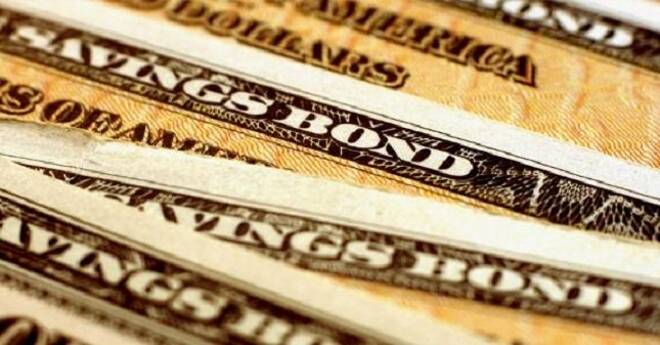Advertisement
Advertisement
Rising Yields, Upbeat Yellen Give U.S. Dollar Boost Last Week
By:
Last week’s price action by the U.S. Dollar was dominated by Fed member comments and political events. At the end of the week, December U.S. Dollar Index
Last week’s price action by the U.S. Dollar was dominated by Fed member comments and political events. At the end of the week, December U.S. Dollar Index futures settled at 93.579, up 0.644 or +0.69%.
The week started with Fed Chair Janet Yellen saying on October that the American economy was in good health in an upbeat assessment that reinforced expectations the Fed is planning to raise its benchmark interest rate later this year.
Referring to the Fed’s benchmark rate, Ms. Yellen said, “We continue to expect that the ongoing strength of the economy will warrant gradual increases in that rate to sustain a healthy labor market and stabilize inflation around our 2 percent longer-run objective.”
On October 20, Yellen said that the lack of inflation has been an explainable “surprise,” while the Fed’s removal of stimulus is “working well.”
“We’ve had a series of weak, soft readings on inflation, core inflation, beginning in March and the reasons for that are not immediately clear,” Yellen said. Reasons for low inflation were “pretty understandable until this year. This year has been a surprise.”
On October 17, Federal Reserve Bank of Philadelphia President Patrick Harker said he thinks one more increase in interest rates is appropriate this year but cautioned his forecast could change if inflation doesn’t pick up.
“We just have to be prudent and take our time”, Mr. Harker said in an interview with The Wall Street Journal.
In other news, the Empire State Manufacturing Index beat expectations with a reading of 30.2 and the Philadelphia Fed Manufacturing Index bested its estimate with a reading of 27.9.
Weekly Unemployment Claims hit a 44-year low. The Fed Beige Book showed growth in all regions. Housing data was mixed with Building Permits and Housing Starts coming in below expectations and Existing Home Sale exceeding the estimate.
Politically, the Senate passed the budget which paved the way toward tax reform. This helped drive up U.S. Treasurys, demand for higher risk assets and the U.S. Dollar. It was also reported that President Trump was considering three candidates for Fed Chair, one of them, current Chair Yellen. He is expected to make his decision the first week of November.
USD/JPY
The Dollar/Yen rose sharply last week, driven mostly by a widening of the spread between U.S. Government Bonds and Japanese Government Bonds. The increasing interest rate differential helped make the U.S. Dollar a more attractive investment.
The USD/JPY settled at 113.495, up 1.667 or 1.49%.
AUD/USD
The Australian Dollar fell last week in reaction to rising U.S. Treasury yields and a rising U.S. Dollar. The divergence in monetary policy between the U.S. Federal Reserve and the Reserve Bank of Australia also helped boost demand for the Greenback.
The AUD/USD settled at .7814, down 0.0073 or -0.93%.
The Aussie had almost no reaction to Chinese economic reports last week since the major reports came in as expected.
Chinese CPI met expectations with a reading of 1.6%. However, PPI exceeded the estimate with a reading of 6.9%. Quarterly GDP also met expectations with a reading of 6.8%.
In Australia, the RBA minutes continued to indicate the central bank has no intention to move interest rates over the near-term despite pressure from other major central banks.
The Australian Unemployment Change was 19.8K versus 14.1K. The Unemployment Rate fell to 5.5%.
NZD/USD
Political uncertainty crushed the New Zealand Dollar last week, making the Forex pair the biggest loser for the week.
The NZD/USD settled at .6960, down 0.0211 or -2.94%.
The surprise emergence of a Labor-led coalition government in New Zealand pummeled the Kiwi as global investors contemplated a raft of potential changes to economic policy, including the targets of the country’s central bank.
In other news, New Zealand CPI came in better-than-expected at 0.5% versus an estimate of 0.4%. The GDT Price Index also came in lower at -1.0%.
About the Author
James Hyerczykauthor
James is a Florida-based technical analyst, market researcher, educator and trader with 35+ years of experience. He is an expert in the area of patterns, price and time analysis as it applies to futures, Forex, and stocks.
Did you find this article useful?
Latest news and analysis
Advertisement
